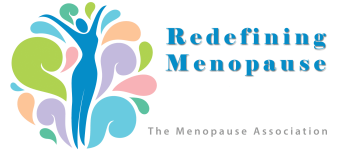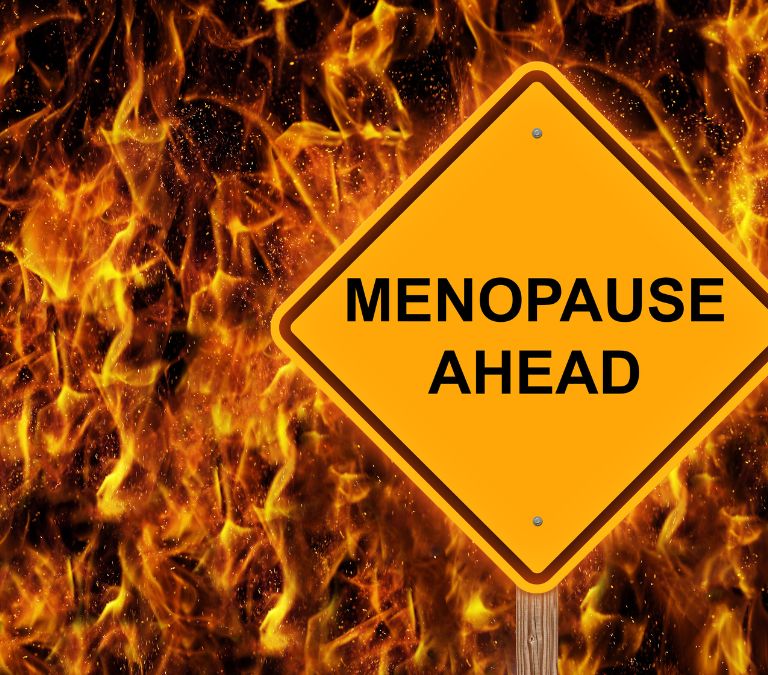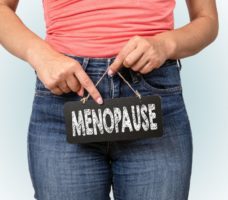If you are beginning to experience menopausal symptoms or suspect those symptoms you feel are symptoms of menopause, you would be interested in knowing about menopause facts and important statistics. In this article, you will find some very interesting menopause facts and statistics to help you through the journey.
But before we discuss menopause facts and take a look at the statistics, let’s learn more about menopause.
Menopause is defined by the World Health Organization (WHO) as the permanent ceasing of the menstrual cycle due to a decrease or complete loss of ovarian follicular activity. To put this definition in simpler words, menopause is that stage in a woman’s life when their menstruation stops. For menopause to be diagnosed clinically, a woman should have had amenorrhoea for 12 months without underlying causes.
All biologically healthy women will pass through this phase. Because of how complex a process this is, they should know what they are passing through and what they should expect. The menopausal process goes beyond the cessation of the menstrual period. It is a series of physiological reactions that start happening within the body long before the cessation of menstruation. These processes bring about changes in the body. These changes lead to other changes, thereby creating a domino effect. In this article, we will walk you through the physiology of menopause and the different stages of menopause. We will provide relevant information on menopause while throwing in facts and statistics you probably never knew about menopause.
The Physiology Of Menopause
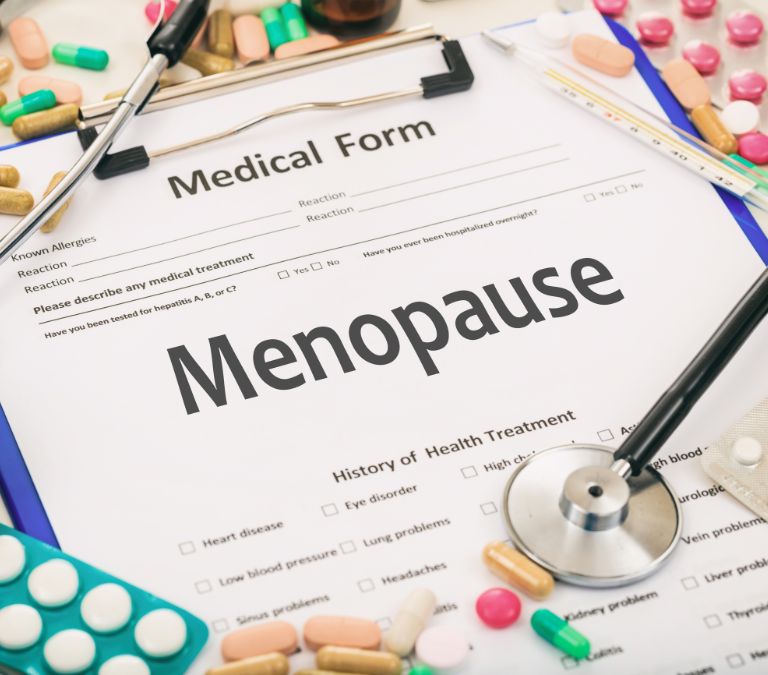
Menopause arises when the ovary loses its sensitivity to gonadotropin stimulation. There are two gonadotropic hormones, follicle-stimulating hormone, and luteinizing hormone. The pituitary gland produces these two hormones due to stimulation from the gonadotropin-releasing hormone (GnRH).
They stimulate the ovary to go into egg development and maturation. By doing this, they set off the process that would ultimately lead to menstruation in the absence of fertilization. However, when the ovaries stop responding to stimulation from these hormones, this process does not occur, and therefore the menstrual cycle ceases.
This lack of sensitivity is due to follicular attrition. Follicular atresia is a periodic process that causes the destruction of follicles and oocytes from the ovary. It is these follicles that contain the reserve of germ cells before fertilization. Therefore, they undergo atresia throughout a woman’s life cycle. This decline in their quantity is why the varying length of the menstrual cycle as women get closer to menopause.
This decline in the number of follicles is also the reason for the shorter menstrual cycle seen in women transitioning into menopause. This shorter menstrual cycle is because the number of follicles has reduced; there is less and less recruitment of oocytes, thereby shortening the follicular phase of the menstrual cycle.
There are also anovulatory cycles during this period, which is when the menstrual cycle occurs without the ovulation phase. There are also months when the menstrual cycle does not occur at all. There are a lot of changes in the hormone production of the body culminating in the final menstrual cycle, which is followed by permanent amenorrhea.
Menopausal Transition And Symptoms Of Menopause

Now that we are done with the clinical aspect, let us take a less clinical look at the menopausal transition and what it entails for women experiencing it. It means that at a particular time between the age of 45-55, a woman will experience her last menstrual cycle, and 12 months after this, if there are no further occasions of menstruation, the onset of menopause is confirmed.
The most notable thing that happens during menopause is hormonal imbalance. The most clinically significant of the affected hormones is estrogen. As we will see later on in this same article, this hormone is important for many changes during menopause.
Signs and Symptoms Of Menopause
We must mention here that menopause is not considered a diseased state. All biologically healthy women have to pass through a normal phase of human life, no matter their medical history. However, some signs and symptoms indicate that someone is transitioning into menopause. These symptoms vary in severity and are different from person to person. While some might require some sort of treatment, others require just a little change of lifestyle.
- Irregular Periods
This is usually what most women notice first when transitioning into menopause. This is probably because the periods are directly linked to the menstrual cycle, and irregularity becomes a source of worry.
During the transition to menopause, periods become irregular. The length of each period varies greatly, and sometimes, the period might be delayed for some time. These changes are not serious, but it might be good to contact your healthcare provider if you notice anything out of the ordinary.
- Hot Flashes
This is another common sign of menopause. It occurs in most women and can last for a very long time. A sudden feeling of hotness characterizes them. They are usually accompanied by serious flushing and red blotches on the upper part of the body. This is then followed by a period of intense cold and sweating. These particular symptoms vary, with some people experiencing very strong flashes.
In contrast, some don’t even experience the symptom at all. Some people get these flashes once a week, while others can have several episodes in one hour. The experience varies from person to person and can get very uncomfortable for some women. Most women seek help to manage this symptom because of how uncomfortable it can get.
- Incontinence
Some women experiencing menopause might have a loss of bladder control. Strenuous activities might bring up the sudden urge to urinate. Laughter, sneezing, coughing or shock might cause urine to leak. The first thing to do, if this happens, is to see a doctor.
- Mood Changes
Women experiencing menopause tend to feel moody and experience mood swings more often. In addition, they become irritable and moody a lot easier than before menopause. Scientists are still trying to figure out why these happen. Still, research shows that family and medical history play a key role.
- Sleep Pattern
The sleep pattern of women undergoing menopause also sees some changes. Because of the hot flushes, there is a tendency for night sweats. This will make getting a good night’s sleep a very difficult feat.
- Vaginal Health
The vagina tends to get drier after menopause. This could take a toll on the sex life if not addressed. In addition, there are risks of genital infection, which seem to be higher in women experiencing menopause. Therefore, women experiencing menopause should take care of their vaginas and seek medical treatment if they notice anything out of the ordinary.
- Physical Changes
Sometimes the body of women experiencing menopause changes. For example, they could lose lean muscle mass and gain visceral fat. In addition, joints and muscles might become stiff and generate aches. However, research shows that this might be a lot more due to old age than it is due to menopause.
Getting treatment for symptoms of menopause is really up to the woman and her healthcare provider. The menopausal journey, as you might have begun to notice, is quite personal and can be a little complicated. Keep notes of your family’s medical history. Honesty and consistency with your healthcare provider will go a long way in ensuring that you get the best care and treatment for these symptoms.
The Stages Of Menopause
We mentioned before how menopause is not a single event but rather a series of events long before the cessation of the menstrual cycle. The implication is that there are stages to this event. The menopausal event is divided into three very slow stages. There is the perimenopause stage, the menopause, and the postmenopause stage. These different stages of menopause are important, and getting to understand and recognize them will go a long way in the detection and diagnosis of menopause. In this part of this article, we will look at these stages to understand what goes on in a woman’s body while they undergo a menopausal transition.
- Perimenopause
This marks the onset of the menopausal transition. It is when your body begins its transition into menopause. At this time, your body’s reproductive years are ending. As a result, perimenopause is usually characterized by producing smaller amounts of hormones than usual. These will lead to erratic and irregular menstrual cycles.
The thing about perimenopause is that it varies from woman to woman. Some women may start experiencing perimenopause in their mid-50s, while others could start as early as in their mid-30s. The length of this particular stage varies from woman to woman too. It can last as long as 8 years, but it can also be as short as a year.
The decline in estrogen levels during perimenopause is the primary source of hormonal changes you witness during this period. Estrogen is produced by your ovaries and is essential for the reproductive system to function properly. Your estrogen levels suffer a drop as you reach perimenopause. As estrogen levels drop, progesterone, another hormone produced by the ovaries, becomes unbalanced. These two hormones control ovulation and menstruation. Hormone levels commonly fluctuate during perimenopause.
Also, because of this drop in estrogen production, the ovaries stop producing eggs when you approach menopause. Therefore, you will no longer have your period at this point.
During perimenopause, your body might start experiencing changes as it tries to get used to the different hormone levels. While perimenopause signifies the beginning of the transition into the cessation of fertility, it is still possible to get pregnant at this stage of the transition. Perimenopause continues until menopause.
A lot of times, perimenopause is confused with premenopause. These two words do not remotely mean the same thing. When you’re in premenopause, you don’t have any signs of perimenopause or menopause. You’re still regarded to be in your reproductive years if you still get periods, whether regular or irregular. There may be some hormonal changes, but there are no visible changes in your body. However, during perimenopause, you begin to see the signs associated with the menopausal transition.
Perimenopause is associated with a reduction in estrogen level, which occurs when the body is preparing to stop releasing eggs, thereby ending the fertility timeline. Perimenopause might be due to clinical conditions, so there is a need to diagnose the underlying condition properly.
Signs And Symptoms Of Perimenopause
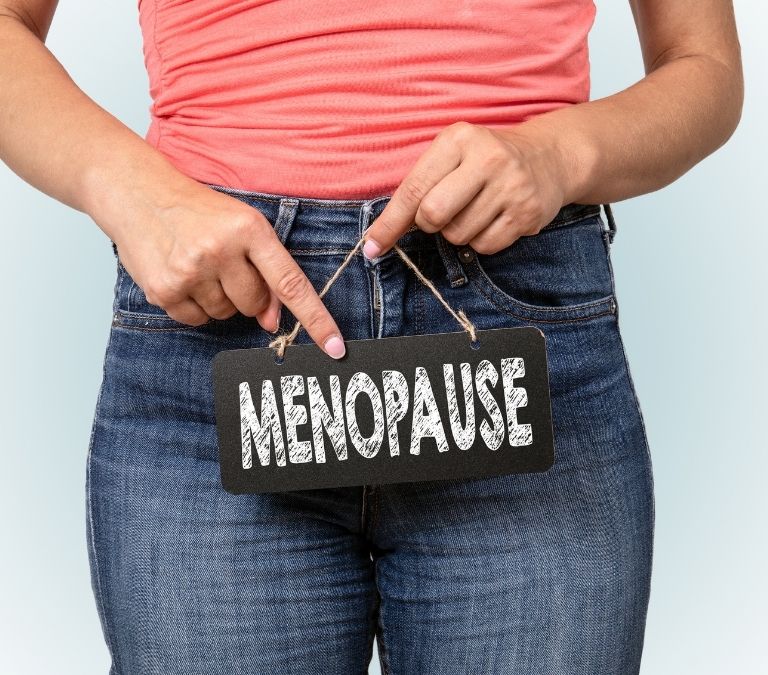
The first indication of perimenopause is period irregularities. This is because your body produces fewer hormones that aid in ovulation. As a result, your menstrual cycle may be longer or shorter than usual. It’s also possible that your bleeding is heavier or lighter than usual. Premenstrual syndrome (PMS) symptoms may also vary for some women.
The menstrual cycle is usually somewhat predictable. Still, most women’s menstrual periods will change from somewhat predictable to unexpected during this period. The most frequent indicators of menopause, such as hot flashes and vaginal dryness (vaginal atrophy), are experienced by many women early in the menopause transition.
The symptoms produced by perimenopause are usually because your body is getting used to the declining estrogen level. The most common symptoms are
- Hot flashes
- Irregular periods
- Vaginal atrophy
- Urinary incontinence
- Insomnia
- Depression
It is important to note that you do not need to have all the symptoms mentioned here before saying you are in perimenopause. Some people might not experience at least one of these symptoms throughout their menopausal life.
While these symptoms are normal for people going through the menopausal transition, other conditions might trigger them apart from perimenopause. So make sure to contact a healthcare provider to eliminate other possibilities.
Diagnosis and Treatment
Though diagnosis of perimenopause isn’t necessarily done by your healthcare professional. Many people notice the changes due to perimenopause, making lifestyle changes to accommodate it.
Testing the level of follicle-stimulating hormone is usually the go-to test for diagnosing if menopause has started. However, during perimenopause, your hormones tend to rise and fall erratically. Therefore, depending on FSH for a credible diagnosis of perimenopause might not be entirely wise. This reasoning becomes even clearer when we realize that many other things, including birth control pills and other medications, can affect the test results.
There isn’t any treatment for perimenopause. It is, after all, a natural phase in a woman’s life. The effects it brings about might require some lifestyle changes, but there is rarely a need for treatment for most women.
Women undergoing menopause are advised to make the following lifestyle changes
- Quit smoking and limit caffeine and alcohol to the barest minimum.
- Practice a healthy diet by eating meals rich in lean proteins and other nutrients.
- Exercise regularly
- Keep healthy sleeping patterns and manage stress through meditation, yoga, and other stress management techniques.
However, some women might experience serious symptoms. In this case, your healthcare provider will prescribe treatments for the symptoms experienced to keep the symptoms under control. For example, depending on the symptoms experienced, the doctor might prescribe birth control pills, topical creams, and antidepressants. In severe cases, they might prescribe hormone replacement therapy. Hormone therapy can help alleviate a lot of the perimenopause symptoms.
- Menopause
This is the second stage of the three stages, and it is diagnosed retrospectively. The ovaries cease to produce the hormones responsible for mediating the menstrual process. Once a woman experiencing perimenopause goes an entire year without a single menstrual period, she has gone through menopause and has successfully entered the postmenopause stage.
- Post Menopause
A woman is said to be in the postmenopause stage if they have successfully stayed a year without a menstrual cycle. It occurs after someone has been retrospectively diagnosed with menopause. The average age for going into postmenopause is 52 years.
However, people have been known to go into postmenopause earlier than or later than this. Postmenopause, like menopause, puts the woman at risk of some health issues. Cardiovascular diseases, osteoporosis, vaginal atrophy, and mental illness seem to be heightened among women in their postmenopause stage.
Postmenopause occurs after a woman stops ovulating, successfully bringing a close to her reproductive years.
Postmenopause continues till death; however, the symptoms of menopause might become milder or, in some cases, nonexistent. Unfortunately, this is not true for everyone. Some people might still experience menopausal symptoms a decade or more into postmenopause.
During postmenopause, the estrogen and progesterone produced by the ovaries are at their lowest. This is why some women still experience menopausal symptoms during postmenopause.
Symptoms Of Postmenopause
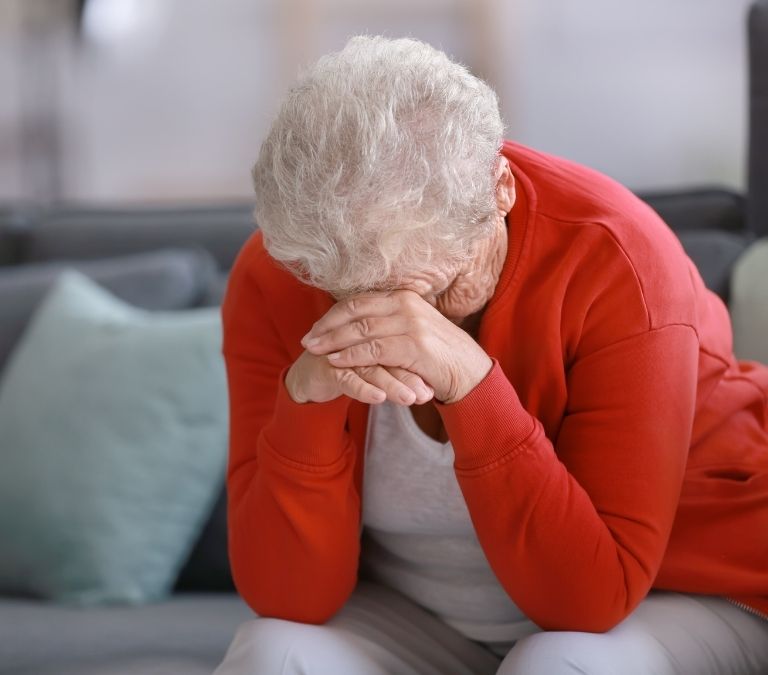
The majority of postmenopausal women experience lasting menopausal symptoms. However, the signs and symptoms are less severe. They almost vanish in certain circumstances. Low levels of reproductive hormones induce lingering symptoms.
Postmenopausal women may experience symptoms such as:
- Hot flashes and night sweats.
- Vaginal dryness and sexual discomfort.
- Weight changes.
- Depression.
- Changes in sex drive.
- Insomnia.
- Dry skin.
- Hair loss.
- Urinary incontinence.
Consult your healthcare practitioner if your symptoms grow more severe or interfere with your daily activities. They should rule out any underlying conditions that are producing these symptoms. An example is intense vaginal bleeding.
Vaginal bleeding isn’t a typical postmenopausal symptom of lower hormone levels. After intercourse, the dryness in your vaginal area may produce some minor bleeding or spotting. In some situations, it could also signify a condition such as endometriosis or uterine fibroids, infections such as endometritis, or malignancy.
Diagnosis Of Postmenopause and Treatment
Diagnosis is made retrospectively by a health practitioner. Your healthcare professional can determine if you’re in postmenopause based on your symptoms and the length of time since your last menstrual period. To confirm that you’ve gone through menopause, your healthcare professional may take a blood sample and examine your hormone levels. Remember, you aren’t considered in menopause unless you haven’t had a period in over a year.
Treatment of postmenopause isn’t necessary in most cases. However, in cases where the symptoms of menopause persist and become troubling, there might be a need for treatment. The treatment used is quite similar to those used to treat menopausal symptoms.
The go-to treatment is hormone replacement therapy. Your healthcare professional may consider the following treatments to aid with postmenopausal symptoms:
- Antidepressants are used to treat depression or mood swings.
- Pain from sexual intercourse and vaginal dryness can be relieved with vaginal creams.
- Certain drugs have proven efficient against hot flashes and night sweats.
- Often, your doctor will advise you to make lifestyle adjustments to help you manage your symptoms.
Certain lifestyle or at-home adjustments can aid in the management of postmenopausal symptoms. For example, to make sex more enjoyable, use water-based vaginal lubrication. Dryness and soreness can be alleviated by lubricating the vaginal canal. Depression and other postmenopausal symptoms can be alleviated with regular exercise, meditation, and other soothing activities.
Whole-grain cereals, flaxseed, chickpeas, and lentils are high in phytoestrogens (plant-based sources of estrogen). Therefore, they should make up the bulk of the diet of postmenopausal women. Caffeine and alcohol use should be reduced as well.
Hormonal Changes Seen During Menopause
Before we start, we must reiterate that menopause is not a diseased state. It is a physiological condition that every woman has to face, irrespective of medical history. So whether you have a clean bill of health or struggle with several health conditions, the transition into menopause is inevitable.
We have already mentioned that menopause is caused by certain physiological changes that are probably due to the effect of aging. One of these physiological changes is the change in hormone level. During menopause, many reproductive hormones see a change in their levels. These hormones include estrogen, a major hormone, as we will see later on in this article, progesterone, which is another major hormone, follicle-stimulating hormone, testosterone, inhibin, and luteinizing hormone, and gonadotropin-releasing hormone.
These hormones play specific roles, and these roles are mediated by their levels in the bloodstream. During menopause, these hormones become deficient, and their functionality starts to decline. The decline in functionality in most of these hormones is due to the deficiency of two major ones; estrogen and progesterone. We will look at these two hormones and what happens to them during the menopausal transition.
Estrogen
Estrogen is a sex hormone chiefly produced by the ovary and the adrenal gland. There are three major types of estrogen produced in a normal physiological woman. Estradiol and estrone are considered the main estrogens. In contrast, estriol, a product of the other two, is considered a very weak form of estrogen. Estradiol is, however, the most prevalent of the different forms of estrogen.
During the perimenopause stage, the ovaries start producing fewer and fewer estrogens. This decrease is mainly due to the declining quantity and quality of ovarian follicles. The decline in estrogen production will stimulate the pituitary gland to produce more follicle-stimulating hormone and luteinizing hormone. These hormones are increased during the perimenopause stage of the menopausal transition. As a result, the FSH surge witnessed during this time continues for the rest of the woman’s life.
Progesterone
This is a cholesterol-based hormone that is normally synthesized in the ovary, the adrenal gland. It is secreted by the female reproductive system and functions to maintain the structure of the inner lining of the uterus. This hormone plays an important role in the menstrual cycle and the reproductive processes of the woman. It prepares the walls of the uterus for accepting fertilized eggs.
Doing this ensures that the egg is implanted and allowed to develop. It also has an inhibiting effect on the uterus because it does not allow for the contraction of the uterus muscles. Doing this makes sure that the fertilized egg is not extruded. If the egg is not fertilized, the body continues to secrete progesterone until a few days to start the menstrual cycle. During this time, the amount of progesterone secreted reduces, causing the breakdown of the uterine wall and causing menstruation.
Health Risk Faced By Women Undergoing Menopause
We have established that menopause is a biological obligation any healthy woman is sure to face. While the process of menopause itself is not considered a disease clinically, it, however, leads to certain physiological changes, chief among which is the hormonal changes that we have mentioned above.
These hormones function beyond the menstrual cycle and play other roles in maintaining balance in the body. Due to menopause, the production of these hormones in the body is reduced, and their functionality is reduced. This lack of functionality is almost always disadvantageous.
Menopause in women happens as they get along in age, and we know that age is a risk factor for many diseases. Coupled with the health risks that the menopausal transition brings about, the age factor centers on the menopausal woman as the demographic with the most health risks. So let us look at the various health risks that menopausal women run.
- Heart disease
Women experiencing menopausal transition seem to be most at risk of heart disease. According to studies, roughly a third of women will get a cardiovascular illness. These chances increase as they transition into menopause.
Estrogen is a hormone that helps the blood arteries to remain flexible. As a result, blood flow through the blood vessels might occasionally require that blood vessels expand or contract. Because of the impact of estrogen on these blood arteries, they maintain the elasticity needed for these contractions and expansions to take place.
Menopause is accompanied by a decrease in the amount of estrogen in the body, reducing the blood vessels’ elasticity. The lack of estrogen that accompanies menopause has also been implicated in changes to a woman’s lipid profile. When combined with other aging factors, this reduction in estrogen levels leaves the heart of a menopausal woman vulnerable to breakdown. Recent studies have proven that coronary heart disease occurs at higher rates (almost 2-3 times higher) in women who have reached menopause.
Several studies have found that the number of hot flashes experienced by menopausal women is closely proportionate to their chance of getting heart disease. Hot flashes are another symptom of menopause caused by a drop in estrogen levels in the body. This might serve as a positive marker toward pinpointing the risks of heart diseases among menopausal women. A visit to the doctor may be essential if a menopausal woman is experiencing frequent hot flashes.
It’s also a good idea to see a doctor if anyone in your family has a history of heart disease. As a result, health care workers can begin fighting the condition as soon as possible.
We have no control over several elements that contribute to the incidence of heart disease. Although family history, age, and even menopause cannot be controlled or prevented, there are steps that women can take to lower their risk of heart disease during menopause.
Living a heart-healthy lifestyle is one of the ways people can do this. This includes cutting down or limiting refined sugars from their diet, eating more vegetables, and avoiding red meat. They should also begin practicing heart-healthy activities such as walking and exercising and giving up unhealthy ones such as smoking.
Women should also learn to know their bodies and be aware of any signs of heart disease that their bodies may be displaying. For example, women should regularly monitor their blood pressure, cholesterol, BMI, and blood sugar levels.
The drop in estrogen levels in menopausal women has been associated with the development of heart disease, but this does not suggest that hormone replacement therapy reduces the risk. In truth, no research has demonstrated that this is the case. Living a heart-healthy lifestyle has been the only approach to minimizing the risk of postmenopausal heart disease so far.
- Osteoporosis
Osteoporosis is a disease that damages the body’s skeletal structure. It weakens the bones and makes them more prone to breaking. Unfortunately, it’s a very quiet disease, and it’s usually not discovered until a break happens in a body area that shouldn’t have broken if the bones were healthy.
According to a study, women are four times more likely than males to get this condition. The most common symptom of osteoporosis is histological thinness and weakness of the bones, which makes fractures more likely. This susceptibility is already high in women, but it becomes significantly higher in women going through menopause. More than 250,000 menopausal and postmenopausal are suffering from this condition. This is because estrogen protects the bones before menopause, but this protection is lost once estrogen levels drop after menopause.
There are two types of risk factors for osteoporosis in women: modifiable risk factors and non-modifiable risk factors. Age, race, body type, family history, early menopause, fracture history, and past oophorectomy are non-modifiable risk factors. In these circumstances, the woman has little control over the risk factors. Therefore, she is unable to prevent them from affecting her bone structure.
Modifiable risk factors are those over which the woman has some control. For example, it includes dietary factors such as low calcium and vitamin D intake, a sedentary lifestyle with little exercise, and smoking.
Several medical issues can increase your risk of developing osteoporosis—anovulation, hyperparathyroidism and hyperthyroidism, chronic renal illness, and any disease that necessitates using corticosteroids systemically.
A study of these risk variables will aid in reducing the time it takes for high-risk women to develop osteoporosis after menopause. Therefore, before they turn 65, women with any aforementioned clinical conditions and/or risk factors should speak with their healthcare professionals about getting tested.
Women should be instructed on addressing modifiable risk factors in both the prevention and treatment of osteoporosis. Because many women’s diets are deficient in calcium and vitamin D, dietary changes and supplementation can assist. Calcium and vitamin D should be 1000–1500 mg and 400–800 IU per day. This can be performed by food or vitamin and mineral supplementation. Reduced risk of osteoporosis is another of the many health benefits of quitting smoking and exercising consistently. Weight-bearing exercises should be incorporated into training programs to increase bone strength as they work against gravity.
The most frequent medical therapy for osteoporosis prevention and treatment involves medications that reduce bone loss and anabolic substances that encourage new bone development.
Hormone therapy can help to prevent and cure osteoporosis (HT). When started immediately after menopause and sustained for a long time, estrogen therapy has been shown in observational studies to reduce osteoporosis-related fractures by roughly 50%. It also helps women who already have the illness to have fewer fractures.
In the Women’s Health Institute trial, hormone replacement was chosen to reduce osteoporotic fractures. In addition, hormone therapy has been demonstrated to protect against bone loss in this and other investigations. However, long-term hormone therapy carries hazards such as endometrial and breast cancer, deep vein thrombosis, and pulmonary embolism. As a result, various alternative methods for reducing the risk of osteoporosis and related injuries are recommended.
Given that bone loss can occur before a woman’s period stops, women should speak with their healthcare provider as soon as their periods become less predictable to find out what they can do to protect their bone health and retain its histological structure.
- Urogenital Health
There’s a higher probability of urogenital atrophy after menopause. This thinning of the vaginal walls is generally followed by vaginal wall dryness and inflammation. It can induce itching (pruritus), dysuria, dyspareunia (painful intercourse), and urine incontinence, among other things. This is a common ailment that affects many women going through menopause. Vaginal atrophy does not affect every postmenopausal woman, and for most women, it stops a few years into postmenopause.
This complication is mostly a result of a decline in the amount of estrogen the body produces. Because of this decrease in estrogen, the vaginal walls become thinner and more vulnerable to injury. As a result, women going through menopause or in the years leading up to menopause may experience vaginal atrophy. For some women, symptoms appear before menopause, while for others, symptoms do not appear until after menopause.
Urogenital atrophy produces a variety of consequences.
Urinary tract infection is one of the most serious side effects of vaginal atrophy. In addition, the thinner, dryer vaginal walls will provide an ideal habitat for germs to thrive.
UTIs aren’t just a problem for women who are going through menopause. Urinary tract infections have been known to affect women of all ages. However, studies have shown that age is a determining factor in women. The number of women over 65 who have had a urinary tract infection is more than double that of those under 65. According to studies, more than 10% of women undergoing menopause get a urinary tract infection each year.
Maintain appropriate genital hygiene to avoid catching a urinary tract infection. Drink plenty of liquids and urinate at the appropriate times.
Urinary tract infections that occur frequently should be taken seriously, and a healthcare provider should be notified.
Incontinence is another disorder caused by urogenital atrophy. It’s defined as having trouble managing one’s bladder. It can start well before menopause and last for a long period afterward. This condition affects more than half of all postmenopausal women.
Urinary incontinence is divided into stress urinary incontinence and urgency incontinence. Urinary leakage caused by coughing or physical exercise is known as stress urinary incontinence. It’s the more popular of the two. In most cases, stress urinary incontinence is accompanied by urgency incontinence, which is defined as an uncontrollable urge to go to the bathroom.
The function of two hormones present in the base of the bladder and the urethra decreases after menopause, increasing the risk of urine incontinence. Estrogen and progesterone receptors are found in these organs, and these hormones bind to these receptors, causing them to thicken. The effect of these hormones decreases after menopause, leading the tissues of these organs to thin. The reduction of pelvic muscle tone is one of the most common causes of urine incontinence. Pelvic relaxation is a condition that occurs primarily as a result of aging.
The best strategy to avoid urine incontinence is to empty the bladder as soon as the urge to urinate strikes and do so as often as necessary. Your training program should also include exercises that strengthen the pelvic floor (such as Kegels). Kegels have the advantage of being able to be performed anywhere and at any time. In addition, you tone the muscles that govern the flow of pee by doing Kegels.
If urine incontinence persists, see a therapist for a correct diagnosis and treatment.
- Weight Gain
This is one of the most prevalent problems that women go through throughout menopause, and it’s tied to estrogen or a lack of it once again. Both the loss of loose lean tissue mass and the growth of irregularly distributed fat tissues have been linked to menopause. This weight gain begins about two years before the final menstrual cycle and persists long after menopause.
This increased risk of abdominal obesity is a lack of estrogen, which encourages fat to migrate from the hips to the middle. This is because estrogen plays a crucial role in fat distribution. When the body’s natural amount of estrogen begins to decline, fat in the body is driven to shift to the abdominal region.
Women who are approaching menopause and are experiencing sleep issues, night sweats, or mood fluctuations may find it difficult to eat a healthy diet or exercise. This could lead to metabolic and lifestyle changes that cause belly fat to form.
Menopause is also linked to a drop in progesterone, which has a negative feedback connection with cortisol. Simply put, a drop in progesterone will increase cortisol. Cortisol is another hormone linked to weight increase, particularly around the stomach.
It’s easy to say that a few pounds gain isn’t a huge concern. After all, it’s only fat, and it doesn’t matter if I don’t care about my appearance. However, this isn’t always the case. There are two types of fat located around the stomach. Subcutaneous fat is a type of fat found just beneath the surface of the skin and is considered inactive.
Then there’s the issue of visceral fat. This type of fat penetrates the body deeper, forming layers around internal organs, and has been related to diseases like dementia, diabetes, stroke, cardiovascular disease, and even cancer. The issue’s essence is the fat around the belly because a study has shown that a woman’s vulnerability to the disease does not decrease even if her weight remains the same.
Diet is the first step in reducing abdominal fat during menopause. The majority of people’s diets are high in processed sugars, which should not be the case. One of the primary causes of pendulous belly fat is refined sugars. Women going through menopause should eat a lot of vegetables.
Vegetables are nutrient-dense and extremely beneficial. Cruciferous vegetables are particularly crucial for balancing the body’s estrogen levels. Vegetables are also high in fiber, which assists digestion and lowers food intake, slows metabolism, and lowers belly fat.
Meals high in protein and phytoestrogens should also be included in diets. These will help balance the hormonal imbalance brought on by menopause, and protein will aid in the growth of the muscular mass, which will help to displace fat tissues.
After menopause, calorie restriction can help you prevent gaining weight. Increasing the intensity of your workouts is also a good idea. Incorporate cardio and strength training into your workouts. It’s also crucial to engage in stress-relieving activities like mindfulness meditation or yoga. Stress hormones, including cortisol, rise in response to increased stress levels. As we’ve already established, cortisol has a role in belly fat accumulation. Thus, managing stress is another approach to preventing weight gain during menopause.
It’s also crucial to get enough sleep. Sleep deprivation causes stress, which causes an increase in cortisol levels, which leads to an increase in belly fat. Beauty rest has never sounded more valuable than it does right now.
Some Menopausal Facts To Note

Menopause is different for everyone. Some people go through it without noticing many differences in their lifestyle. At the same time, some see it as liberation from the burden of reproduction. For others, it could be a time of great discomfort. The only constant here is that every woman will pass through this phase in their life. We have collated some interesting facts about menopause, including them in this article.
- Menopause Is Not A Disease
Most people might see menopause as a disease, but this is not true. Although menopause affects the well-being and health of those going through it, it is not technically a disease. It would be best to see menopause as a new beginning—living life in a new, slightly different body. The transition into menopause starts when the people involved are in their 30s or 40s. This is still a long way from being physiologically old, as it is less than half the lifespan of an average woman.
With proper planning, people can go through menopause without making many changes to their lifestyle.
- Menopause Does Not Occur Suddenly
You have probably watched that sitcom where a woman over 50 suddenly feels the need to go to the hospital and is diagnosed with menopause. Well, the truth is that for most people, menopause isn’t sudden. This is because menopause is a process that starts long before diagnosis takes place.
Transition into menopause starts with perimenopause which starts around the 30s and 40s. During this time, there is a decline in the production of estrogen and progesterone, causing irregularities in the menstrual cycle.
Eventually, the menstrual cycle ceases permanently and 12 months after. After that, the woman is declared menopausal. This usually occurs between the ages of 40-58. During this time, they start showing symptoms of menopause, with the most common being hot flashes.
However, there are cases where women experience menopause without the prior transition process. For example, women who surgically have their ovaries removed will experience instant menopause. Other medical procedures can also lead to sudden menopause. However, these tend to last till after the duration of the treatment. The important thing to note here is that menopause is not an event that takes place at a distinct point in time for biologically healthy women.
- Menopause Comes With Symptoms
As we have earlier established, menopause is not a diseased state. Still, it does bring about hormonal changes that are capable of causing the woman to show symptoms. The symptoms and their severity vary from woman to woman. However, they have been known to be severe in some cases, causing significant discomfort and requiring treatment to be managed.
The most common symptoms of menopause include
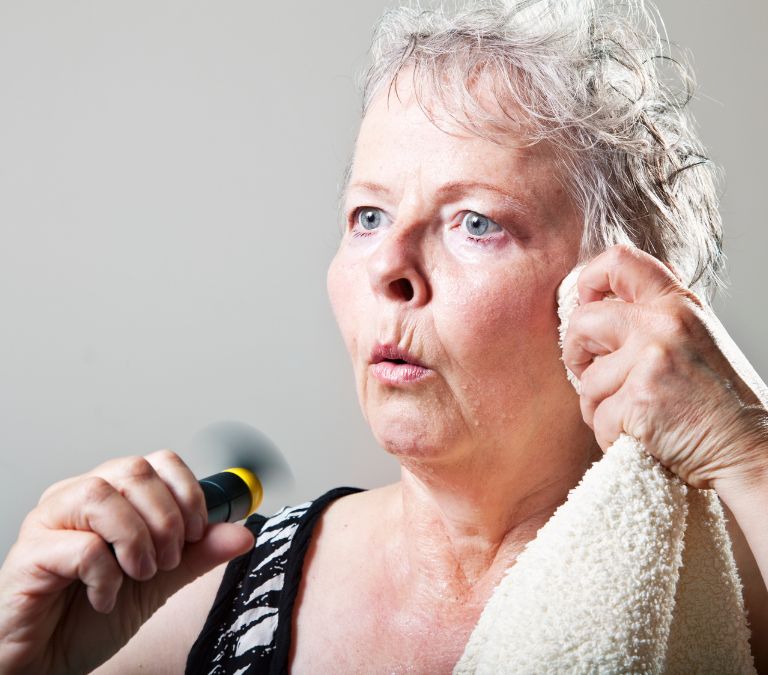
Hot Flashes: This affects about 75% of women and presents as heat sensations in the upper part of the body. Severe cases of this have been known to cause serious distress, and this condition might continue into the postmenopause years.
Night Sweats: When the hot flashes mentioned above occur during the night, they induce a period of intense sweating and shivering. These can become extremely distressful, especially when they start interrupting sleep patterns.
Mood Changes And Anxiety: Hormones do not just affect us physically; they play quite an important role, directly or indirectly, in maintaining our mental health. When these hormones start fluctuating, they can lead to mood swings, depression, stress, and heightened feelings of anxiety.
Difficulty Sleeping: Many of the symptoms already mentioned do not make for a good night’s rest. This is why a lot of menopausal women complain of difficulty falling asleep.
Vaginal Dryness and A reduced Libido: The lack of estrogen that accompanies menopause has been known to cause vaginal atrophy. This condition leads to the vagina feeling dry. This makes for very painful sexual intercourse. This, coupled with the drop in hormone levels, can also lead to a drop in sexual desire, leading to reduced sexual libido.
- Perimenopause Can Come Quite Early
Perimenopause heralds the transition into menopause. This is where the physiological changes that accompany menopause start. These periods can start as early as when the woman is in her 30s and last for 4-8 years. Women undergoing perimenopause present with irregular menstruation and are diagnosed with menopause. Until then, the woman’s reproductive phase is still open, and she is still capable of getting pregnant.
- Estrogen And Related Hormones Do Not Just Disappear
We have repeatedly mentioned how the changes seen during menopause result from a decline in the production of estrogen. This does not mean that during menopause, the body stops producing estrogen. Estrogen is required in the body for many functions; however, during menopause, the demand isn’t as much.
During menopause, the function of producing estrogen shifts from the ovaries to the adrenal glands. The adrenal glands produce androgen, converted into estrogen by another hormone, aromatase.
- Symptoms Can Be Treated
Most people can go through the menopausal stages without any form of treatment. However, we have mentioned how the symptoms can vary in severity. Sometimes these symptoms are so severe that they begin to affect a person’s daily life. In this situation, the healthcare provider might provide possible treatment to alleviate the effects of the symptoms.
- Hormone Therapy: Many of the issues that may arise from the menopausal transition can be corrected using hormone replacement therapy. However, this treatment sometimes comes with side effects and contraindications. It might not be suitable for people at risk of stroke, dementia, breast cancer, and even cardiovascular illnesses. The healthcare provider should advise the woman on her options.
- Treatment For Osteoporosis: One of the most common symptoms of menopause is the bones getting weaker as the protection estrogen provides for them begins to wear off. There is a need for continuous assessment of the bone’s density. Upon notice of it getting weak, vitamin D might be prescribed. The woman advised on lifestyle changes to keep the bone from becoming more brittle.
- Sexual Wellness: Menopause can harm the sexual health of the woman. Due to vaginal atrophy, the vaginal might become dry, making for painful and uncomfortable sex. The doctor might prescribe lubricants to ease the pain during sexual intercourse. Still, if this does not work, the doctor might prescribe the topical application of hormones to help with this issue.
- Antidepressants: Antidepressants have played an important role in treating some menopausal symptoms. They have been known to work against hot flashes. In addition, they have been used to treat mood changes and depression that may accompany menopause.
- Sleep Problems: Many of the symptoms of menopause do not make for a good’s night sleep. Lifestyle changes usually handle these. Exercising regularly and cutting back on alcohol and coffee help maintain a healthy sleeping pattern. Stress is another factor that might affect sleeping, so counseling, relaxation, and other stress relief techniques are usually prescribed to help handle stress and improve sleep patterns.
While most women go through the phases of menopause without needing treatment, if their symptoms get too severe, they are advised to get medical help.
- Menopause and Sexual Life
Going into menopause does not mean an end to the sexual life of the woman. On the contrary, a menopausal woman can be just as sexually active as any other woman. In fact, for some people, menopause offers a sort of sexual liberation as they do not have to worry about menstruation and pregnancy anymore. Menopausal women can maintain their sexual lives by following some steps.
- Menopause might imply that the risks of pregnancy abate, but it does not provide any form of protection against sexually transmitted infections. The use of protection is always advised for women undergoing menopause who intend to continue having an active lifestyle.
- Menopause might lead to vaginal dryness, and this might affect sexual performance. Healthcare providers should be asked for ways to remedy this. They should also fill you in on the best use of lubricants.
- Menopause might imply getting on with age. Regular exercising and a healthy diet will help with sexual performance while keeping the body fit.
- Partners should explore new ways of sexual arousal with the onset of menopause. They should also spend time together in intimacy. The important thing to consider here is communication.
- Menopausal Weight Gain
Weight gain is one of the changes that women go through during menopause. This weight gain usually begins during perimenopause, continues throughout menopause, and is centered around the midsection. However, if the woman did not have any threatening weight problems before menopause, they can still manage this weight gain.
The major reasons for this weight gain include:
- Menopause implies a decline in estrogen. Because estrogen is crucial for fat distribution to the lower half of the body, fat will be forced to migrate to the middle area as estrogen levels decrease at this period. The abdominal area will expand as a result of this movement.
- A decrease in another hormone called progesterone also causes menopausal weight gain. Cortisol levels will rise as a result of this decline. This hormone contributes to the formation of the menopausal abdomen.
- Another factor contributing to the development of abdominal fat in women going through menopause is their lifestyle and metabolism. With the advancement in age, we tend to become more sedentary. We become more susceptible to aches and pains, making exercise more challenging. As our nutrients take longer to break down in the body, our metabolism will slow down. During menopause, these variables contribute to weight gain in the stomach area.
- An unhealthy diet can also result in weight gain. Menopausal women should have a healthy diet and maintain a healthy lifestyle.
Concerns about weight should be taken to a healthcare provider. They will, most likely, prescribe lifestyle changes. There is a need to keep the weight of women experiencing menopause under control. Overweight women are more likely to suffer from intense menopausal symptoms.
- Menopause And Stress
Menopause also brings with it trouble focusing and remembering things. Stress is a big factor. Stress can be caused by a variety of factors, including:
- The consequences of physical changes brought about my hormone levels.
- Pressures from home, work, and other sources
- Age-related issues
Stress and thinking issues can be managed in a variety of ways, including:
- Regular physical activity
- Joining a yoga or relaxation class
- Keep a notebook on the kitchen wall with all upcoming activities if possible.
- Achieving a balance between obligations and personal pursuits
- Keeping in touch with family and friends
- Sharing with other women going through menopause
- If you’re worried about memory loss, anxiety, or despair, seek treatment.
- You Can Still Get Pregnant During Menopause
The end of a woman’s reproductive cycle is marked by menopause; however, it is still possible to conceive around or after this time.
Perimenopause can begin anywhere between 4 and 8 years before menopause. A person can get pregnant as long as menstruation persists. However, when a woman approaches menopause, her chances of conceiving and carrying a full-term pregnancy decrease. Because of advances in reproductive technology, it is now feasible to conceive after menopause. This is usually done with donated eggs or embryos saved earlier in life by the individual.
Depending on the woman’s age and health status at conception, there may be a higher chance of pregnancy loss, premature birth, and health hazards.
But all these can also happen to people who are younger. These advancements in medicine have filled menopausal women who still want to have children with hope.
Some Menopausal Facts And Statistics To Consider
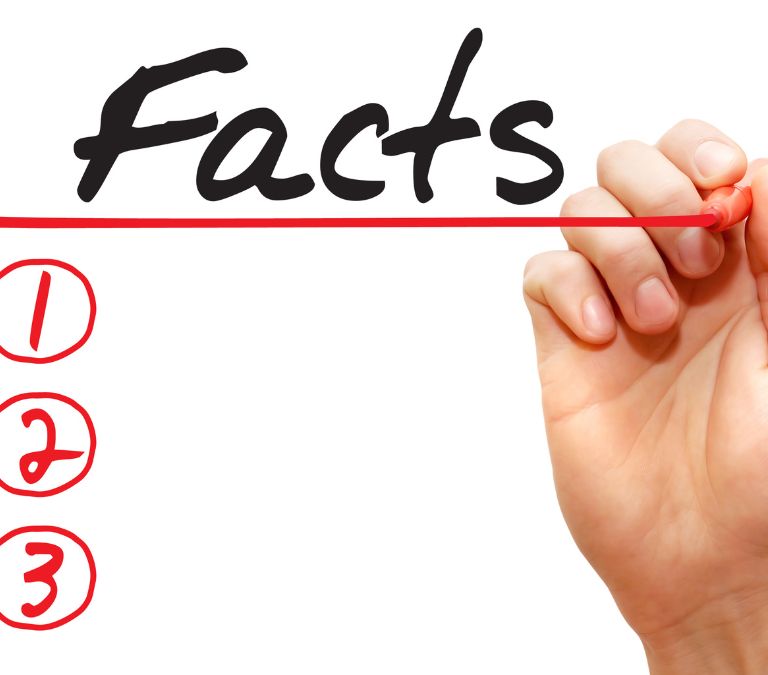
Menopause is a different experience for everyone. Most people do not experience it the same way. There are, however, commonalities in these experiences, and these commonalities have given rise to some menopause facts statistics. It is those menopause facts and statistics that we bring to you now.
- The Average For Menopause Is 52 Years
The average age of menopause onset is 52 years old. Between the ages of 48 and 58, most women cease having periods. However, some women’s ovarian function decline might begin years before they reach menopause. Others will have menstrual periods well into their late fifties.
5% of women also experience early menopause. Menopause, not perimenopause, occurs around 40 and 45 years for these people.
Although it is considered that the age of menopause is genetically set, factors such as smoking or chemotherapy might hasten ovarian decline, resulting in early menopause.
- Estrogen Level Starts Dropping at Age 40
We are already aware that most of the changes that occur during menopause are due to a drop in the hormone estrogen level. This hormone is responsible for many physiological interactions surrounding reproduction in a woman’s body.
When a woman starts approaching the age of 40, this hormone starts dropping, thereby causing the onset of perimenopause. However, this is just an average number as some people experience this drop earlier. In contrast, others experience it a lot later than 40 years.
- 90% Of Women Aged Between 45 and 60 Are Either Currently Experiencing Perimenopause or Menopause
This might look like a startling figure, but it wouldn’t be very surprising when you consider how the onset of the menopausal transition comes quite early for most people. In fact, in the United States alone, 1.3 million women become menopausal each year. Considering that menopause doesn’t just cease after some time, these numbers keep stacking up.
- Symptom Of Menopause Usually Last Between 4 and 8 Years
For most women, symptoms of menopause start around the perimenopause period and last till the postmenopause stage. For most people, this is usually between 4 and 8 years. However, this is not necessarily the case for everyone. For some people, the symptoms do not last this long, while for others, they can last till the cessation of life. This is very rare, though, and the symptoms appear to be milder.
- 75% Of Menopausal Women Experience Vasomotor Symptoms
Vasomotor symptoms are experienced by about 75% of women. These make them the most common symptoms experienced by menopausal women. Hot flashes, nocturnal sweats, palpitations, and migraines are some symptoms. Hot flashes usually last three to four minutes and come at random intervals. Alcohol, food, emotional stress, and physical exercise may aggravate them.
Migraines can vary in degree and intensity. Migraines that do not have an aura are more common than migraines. Women who experience migraines with aura are more likely to have a stroke, especially if they smoke or take oral contraceptives. Changes in hormone levels may also cause other headaches, such as cluster and tension headaches.
- 60% Of Women Experience Urogenital Symptoms
Urogenital symptoms are experienced by about 60% of women. Vaginal atrophy, urethral atrophy, and sexual dysfunction are symptoms (i.e., a decline in libido). Dryness, pruritus, and dyspareunia are symptoms of vaginal atrophy (painful intercourse). Stress incontinence, frequency, urgency, and dysuria are all symptoms of urethral atrophy.
- 45% Of Women Experience Psychogenic Symptoms
Urogenital symptoms are experienced by about 60% of women. Vaginal atrophy, urethral atrophy, and sexual dysfunction are symptoms (i.e., a decline in libido). Dryness, pruritus, and dyspareunia are symptoms of vaginal atrophy (painful intercourse). Stress incontinence, frequency, urgency, and dysuria are all symptoms of urethral atrophy.
- Increase In The Likelihood Of Osteoporosis
Osteoporosis affects well over 250,000 menopausal and postmenopausal women. Osteoporosis is characterized by bone loss or reduced bone density caused by estrogen insufficiency in these women. Women gradually lose bone at the age of 40, at 0.3 percent to 0.5 percent every year. For the next 5 to 7 years after menopause, women endure an increased rate of bone loss of 3% to 5% each year.
- 29% Of Women Experiencing Menopause Never Sought Information Before They Experienced It
Almost a third of women do not seek out information about menopause until they start experiencing it themselves. Most women feel that menopause will give rise to embarrassment, so they do not talk about it until the symptoms start happening to them. Even at that point, many women would still not talk about their menopausal symptoms.
- 45% of Women Do Not Know The Difference Between Perimenopause and Menopause
Almost half the population of women do not know the difference between perimenopause and menopause. While perimenopause is a period of transition into menopause, menopause itself is the biological end to a woman’s menstrual clock
- 20% Of Women Do Not Get Assessed By A Healthcare Provider Until After A Year
As we said before, most women do not find it easy talking about menopause and menopausal symptoms. A recent study had shown that 20% of women waited for a year after experiencing symptoms before they sought out their healthcare providers for assessment.
- 73% Of Women Report That They Are Not Currently Treating Their Menopause
This is one of the most interesting menopause facts we have seen. This could be because of a lack of severity of the symptoms, or it could be that they are not aware of the various treatment options open to women experiencing menopause. Unfortunately, however, most women do not get treatment for their symptoms, as recent studies show.
- 59% Of Menopausal Women Feel Relieved
There have been various studies showing that the menopausal period brings a feeling of relief. According to studies, though, it is mostly menopausal women who feel this relief. 59% of women have reported relief and happiness having gotten through menopause. There is a huge difference between this particular demographic and menopausal women (29%) and perimenopausal women (19%).
- Majority Of Women Feel Unprepared For Menopause
Maybe because they do not talk about it a lot, but the idea of menopause frightens some women. The majority of them feel unprepared for the transition into menopause. According to a recent study, 64% of women feel unprepared to tackle the concept of menopause.
A majority of these women also blamed their healthcare providers, stating that most of them felt uncomfortable talking about menopause with them. That is why it is extremely important to seek a healthcare provider who understands and specializes in treating menopausal women.
- 78% Of Women Say Menopause Had Interfered With Their Life
The symptoms of menopause have been known to vary in their severity. However, it seems these symptoms still manage to find a way to interfere in these women’s lives, no matter the severity. More than 78% of women in a recent study complained of menopause interfering with their lives.
